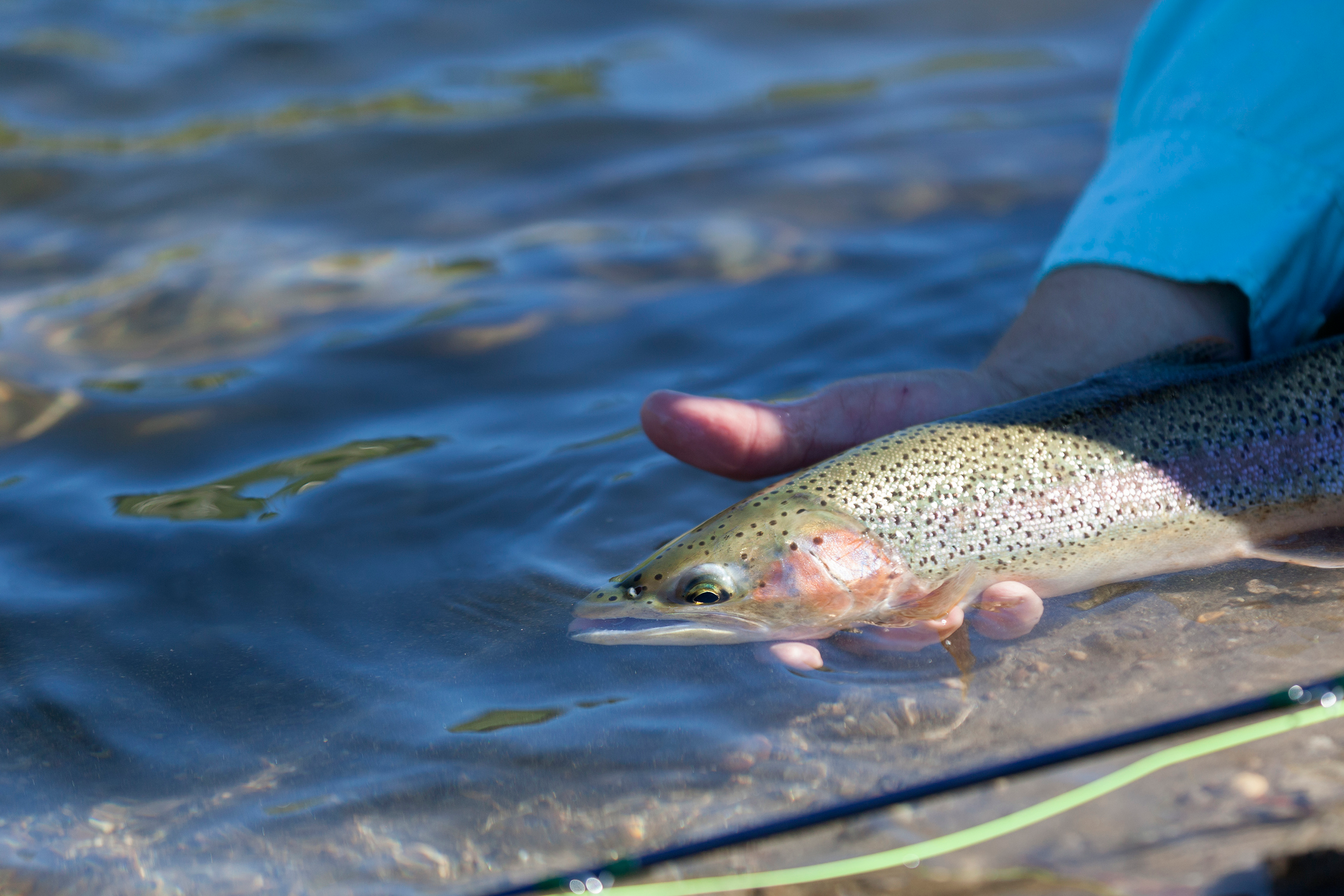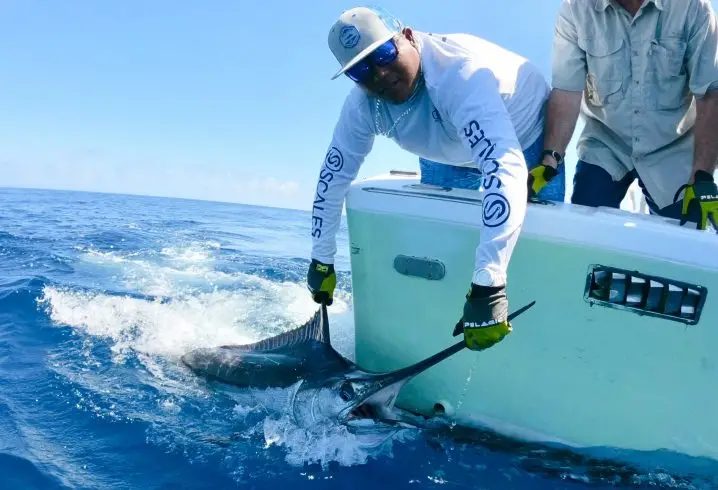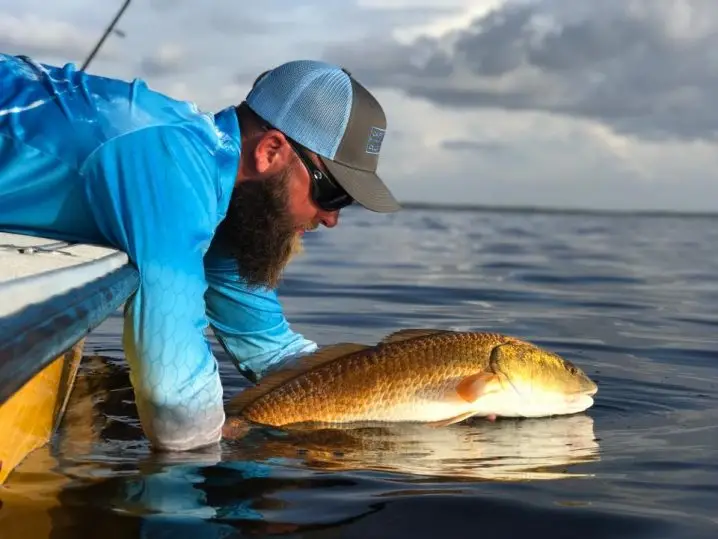Are you an avid angler who loves spending time on the water, fishing for your favorite species? If so, then you’ve likely come across the concept of catch and release.
In this article, we’ll explore the importance of catch and release practices for anglers and provide you with essential information to enhance your fishing experience.
Understanding the Concept of Catch and Release

Have you ever wondered why catch and release has become such a widely adopted practice among anglers? It all boils down to conservation.
Catch and release is a method designed to protect fish populations and ensure their sustainability for future generations. By returning fish back to their natural habitat, we contribute to maintaining healthy ecosystems and preserving the balance of aquatic life.
But what exactly does catch and release entail? Let’s dive into the details!
When practicing catch and release, there are specific guidelines and techniques that every angler should be aware of to maximize the chances of the fish’s survival. It’s not just about throwing the fish back into the water and hoping for the best. Anglers need to handle the fish with care, minimizing stress and injury.
One important aspect of catch and release is the use of barbless hooks. These hooks are designed to make it easier to remove them from the fish’s mouth, reducing the risk of injury. Additionally, using a landing net can help minimize handling time and prevent the fish from thrashing around, potentially causing harm to itself or the angler.
The Importance of Catch and Release

In responsible fishing practices, catch and release plays a vital role. This method is key to maintaining sustainable fishing and safeguarding fish populations and ecosystems.
Anglers using catch and release practices contribute to the conservation of various fish species and the overall health of aquatic environments. Using proper fishing gear, like barbless hooks and circle hooks, increases the likelihood of successful and harmless release fishing. This approach helps in preserving fish stocks and supporting effective fisheries management, preventing overfishing.
Responsible fishing extends beyond native fish populations to consider marine mammals, sea turtles, and other marine species. The National Marine Fisheries Service (NMFS) and NOAA Fisheries emphasize well-managed practices, such as catch limits and the use of live bait, to ensure the resilience of both target and non-target fish.
Using release tools and proper handling techniques is crucial to minimize harm during catch and release. Anglers need to be cautious about avoiding air exposure, especially for deep-water species, and aim to keep the fish in their natural habitat to prevent unnecessary stress on vital organs.
The impact of catch and release spans across diverse aquatic ecosystems, from coral reefs to the high seas. Marine protected areas play a crucial role in safeguarding these environments, providing a sanctuary for various marine species.
Additionally, avoiding illegal fishing practices and responsibly managing recreational angling contribute to the overall well-being of ocean ecosystems.
In essence, the implementation of catch and release isn’t just a choice; it’s a necessity dictated by environmental factors and scientific data. Recreational anglers, as stewards of the water body, can ensure their interactions with fish and other organisms align with sustainable principles.
By adhering to these principles, anglers contribute to preventing overfishing and preserving aquatic life for future generations, fostering a harmonious coexistence between the angling community and the marine world.
The Ethics Behind Catch and Release
Aside from its conservation significance, catch and release also carries important ethical implications. As anglers, it’s our responsibility to respect the environment and the fish we pursue. By practicing catch and release, we show our commitment to the sport and demonstrate good sportsmanship.
Catch and release allows us to enjoy the thrill of the catch while still prioritizing the well-being and welfare of the fish. It’s about recognizing that fishing is not just about catching fish but also about the experience of being in nature and appreciating the beauty of our waterways.
Remember, anglers have a duty to be stewards of the water and protect the resources we love. By practicing catch and release, we contribute to the sustainability of fish populations, promote conservation, and ensure that future generations can also enjoy the thrill of fishing.
Essential Equipment for Catch and Release

Now that we understand the importance and ethics of catch and release, let’s dive into the equipment you’ll need to ensure a successful release.
Catch and release is a practice that allows anglers to enjoy the thrill of fishing while also preserving fish populations and maintaining the overall health of aquatic ecosystems. By releasing fish unharmed, we can contribute to sustainable fishing practices and promote conservation efforts.
Using the Right Fishing Gear
When it comes to catch and release, selecting the appropriate fishing gear is crucial. Using barbless hooks or circle hooks can minimize the likelihood of fish injury during hook removal. These hooks are designed to reduce the chances of deep hooking, making it easier to release the fish unharmed.
Barbless hooks, as the name suggests, do not have the small barb at the end of the hook. This feature allows for easier hook removal, reducing the risk of causing unnecessary harm to the fish. Circle hooks, on the other hand, are designed to hook the fish in the corner of the mouth, minimizing the chance of internal injury.
Additionally, consider using non-stainless-steel hooks which can corrode more easily and help fish shed any remaining hooks after the release. Stainless steel hooks, if left in the fish, can cause long-term harm and potentially lead to infection or death.
By using non-stainless-steel hooks, you can ensure that any hooks left behind will eventually dissolve, minimizing the impact on the fish.
Handling Equipment with Care
In addition to the hooks, it’s important to ensure that your tackle and other fishing equipment are in excellent condition. Check your fishing line for any fraying or damage that may weaken its integrity. A weakened fishing line could lead to a lost fish, or worse, leave an angler unintentionally leaving behind line and tackle, leading to potential harm to wildlife.
Regularly inspecting and maintaining your fishing gear is essential for both your success as an angler and the well-being of the fish you catch. By keeping your equipment in top shape, you can minimize the risk of equipment failure and ensure a smooth and safe catch and release process.
Furthermore, if you plan to use a landing net, make sure it’s made of fish-friendly materials such as rubber, knotless nylon, or silicone. These materials reduce the likelihood of damaging the fish’s scales, slime coat, or fins, ensuring a safe and healthy release.
When using a landing net, it’s important to handle the fish with care and minimize the time it spends out of the water. Keeping the fish in the net while preparing for the release can help reduce stress and ensure a successful transition back into its natural environment.
By investing in high-quality fishing gear and handling equipment, you can enhance your catch and release experience while prioritizing the well-being of the fish.
Remember, catch and release is not only about the act of releasing the fish but also about the steps we take to minimize harm and promote sustainable fishing practices.
Techniques for Safely Catching Fish

Now that we have the right equipment, it’s essential to understand the proper techniques for catching fish without causing them unnecessary harm.
When it comes to catching fish, there are several factors to consider. One of the most important aspects is the proper hooking method. When setting the hook, it’s crucial to do so firmly but without excessive force.
A gentle but deliberate hookset can prevent deep hooking and reduce the risk of injuring the fish’s vital organs. By being mindful of the amount of force used, anglers can ensure the fish’s well-being and increase its chances of survival after release.
Additionally, anglers should be cautious when setting the hook. Avoid striking the rod upwards excessively, as this can lead to more severe injuries or even unintentional fatalities. Instead, focus on a controlled and precise hookset that minimizes harm to the fish.
Proper Hooking Methods
When it comes to hooking fish, there are various techniques that anglers can employ. One effective method is the “slip strike.” This technique involves allowing the fish to take the bait fully before setting the hook. By giving the fish a moment to fully engulf the bait, anglers can ensure a solid hookset without causing unnecessary harm.
Another technique that can be employed is the “side sweep.” This method involves sweeping the rod to the side when setting the hook, rather than upwards. By doing so, anglers can reduce the risk of injury to the fish’s delicate mouth and increase the chances of a successful hookset.
Fighting the Fish Safely
The battle between angler and fish is undoubtedly thrilling, but it’s important to remember that a tired fish is a vulnerable fish. Fighting a fish to exhaustion can increase stress levels and decrease its chances of survival after release. To minimize fatigue, anglers should use proper techniques when fighting the fish.
One technique that can be employed is applying steady pressure rather than relentless force. By maintaining a constant pressure on the fish, anglers can tire it out steadily without causing excessive stress. This technique not only increases the fish’s chances of survival but also allows anglers to enjoy a more sustainable and ethical fishing experience.
It’s important to note that certain fish species are more sensitive to stress than others. For example, cold-water fish such as trout and salmon may become more stressed when exhausted.
Anglers targeting these species should adjust their technique accordingly to ensure the well-being of the fish. This may include shorter fights, using lighter tackle, or even avoiding fishing for these species during particularly hot or stressful times of the year.
By employing these proper hooking and fighting techniques, anglers can enjoy the thrill of catching fish while also prioritizing their well-being.
Remember, fishing is not just about the catch but also about the responsible and sustainable practices that ensure the long-term health of our aquatic ecosystems.
Handling Fish Correctly for Release

Now that you’ve landed your catch, how you handle the fish before release can significantly impact its chances of survival. It is important to remember that fish are delicate creatures, and proper handling techniques are crucial to ensure their well-being.
Minimizing Fish Stress
Each moment spent out of the water increases the stress level for the fish. Therefore, it’s vital to minimize handling time as much as possible. Wet your hands before touching the fish to minimize the removal of protective slime that helps guard against bacteria and infections.
The slime acts as a natural barrier, protecting the fish from various diseases and parasites. By wetting your hands, you create a moist environment that reduces the chances of damaging this protective layer.
When handling the fish, it is essential to be gentle and avoid any unnecessary stress. Supporting the fish’s body horizontally is crucial as it prevents excessive strain on its internal organs.
By cradling the fish and providing support, you minimize the risk of injury and ensure that the fish remains comfortable during the handling process.
Proper Fish Handling Techniques
When removing the hook, consider using a pair of needle-nose pliers or a hook remover. This allows for an easier and faster hook removal process, minimizing any potential harm to the fish.
By using specialized tools, you can safely and efficiently remove the hook without causing unnecessary pain or injury to the fish.
However, it is important to note that if the fish has swallowed the hook too deeply, it may be best to cut the line close to the hook and release the fish without attempting to remove the hook.
Trying to forcefully remove a deeply swallowed hook can cause severe damage to the fish’s internal organs, leading to a decreased chance of survival. It is crucial to prioritize the fish’s well-being and make decisions that minimize harm.
Additionally, if you are practicing catch and release fishing, it is advisable to use barbless hooks. Barbless hooks are designed to make hook removal easier and less damaging to the fish. They reduce the chances of the hook getting deeply embedded and increase the fish’s chances of survival after release.
Remember, the goal is to minimize harm to the fish and prioritize its well-being. By following proper fish handling techniques, you can contribute to the conservation of fish populations and ensure that future generations can enjoy the thrill of fishing.
Releasing the Fish Back into the Water

After handling the fish correctly, it’s time to release it back into its natural environment. But before you do, there are a few additional steps to take to ensure a safe release.
Assessing Fish Health Before Release
Before returning the fish to the water, assess its condition. If the fish is bleeding excessively, has a protruding stomach, or shows signs of severe distress, it may have a reduced chance of survival.
In such cases, your best course of action may be to humanely dispatch the fish instead of releasing it into an uncertain fate. However, these instances are rare, and in most cases, the fish can be successfully released back into the water.
Techniques for Safe Release
Finally, when releasing the fish, gently lower it into the water headfirst, supporting its body until it swims away under its strength. Avoid tossing the fish or simply dropping it into the water, as this can cause additional stress and injuries. Ensure that the fish has fully regained its strength before swimming off and disappears from sight.
By adopting catch and release practices and implementing these proper techniques, you can become a responsible angler who contributes to the conservation and well-being of fish populations.
Remember, the future of fishing lies in our hands, so let’s protect and preserve this incredible sport for generations to come.
Happy fishing!

